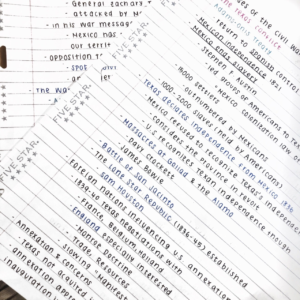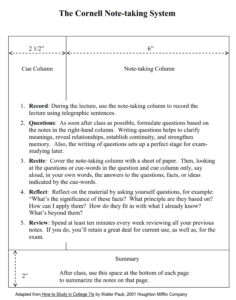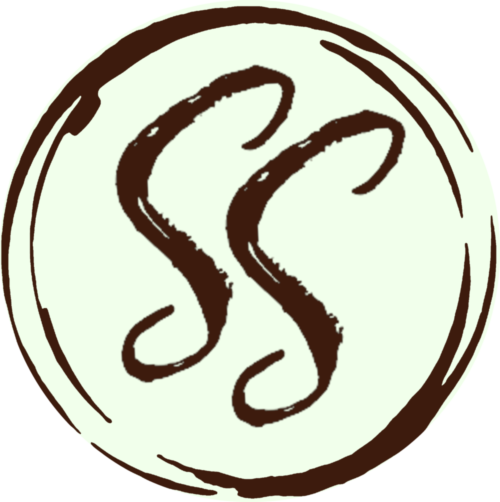
This is the second installment of my posts on the best note-taking methods. If you missed it, you can read Part One. You may or may not know that there are various methods for taking notes. We’ll look at the most common ones in this post.
The Outline Method
The vast majority of note takers, in classes or meetings, use the outline method. It involves writing the main topics listed the furthest left with subtopics and supporting details indented to the right on subsequent lines. You can use any combination of numbers, letters, or symbols to denote the level of info. When physically writing notes, I just use dashes because they’re fastest.

One of the benefits of the outline method is that you only focus on the main points of the lecture. This frees you to use more of your energy actually listening to the instructor. You can take time to absorb the info and hear any examples. Another benefit is that you can quickly and easily see the main ideas in a subject when studying.
If you or the class is more of a linear type, this would be the perfect method for you. It’s orderly, written in chronological order, etc. If you’re doing it digitally, you can insert additional info as needed. You can add color to highlight and/or color code your notes if you’re an organizer or more artistic in nature.
There are some disadvantages to this method, though. It’s not as well-suited for some science and math notes. These types of class notes aren’t always given in a main topic to sub-topic manner. That’s where other methods may be more efficient.
Cornell Notes
I’ve never had occasion to use these myself, but I see their potential! They were developed by an education professor at Cornell University in the 40’s. The page is split into three sections; cues, notes, and summary (see the image below). You take notes in class in the notes section. Use the Cue section for vocabulary and/or questions about the notes. Generate the questions soon after class. You can use these to study. In the Summary section, summarize the info in the notes on that page. Regularly reviewing your class notes in this way will help you to retain it and keep it fresh.

Next week, we’ll cover some less-often used methods.
Do you use either of these methods? Have you tried the other? What was the result?

One response to “The Best Note-taking Methods – Part 2”
I was taught something like the Cornell method back in the early 90s in college.
the space to the left was blank and reserved for comments on the notes you took in the righthand column. this version takes it further, and think from the limited amount of knowledge I have about learning, this is sound note taking skill that ought to be emulated.